Table of Contents
The Cu Chi Tunnels Vietnam War, one of the most controversial and devastating conflicts of the 20th century, saw the involvement of major world powers and had a profound impact on the political landscape of Southeast Asia. At the heart of this conflict was the Cu Chi Tunnels, an extensive network of underground passages and bunkers used by the Viet Cong to wage guerrilla warfare against American and South Vietnamese forces. These tunnels not only served as a sanctuary for the guerrillas but also played a crucial role in their resistance against the superior firepower of their adversaries. In this article, we will delve into the history of the Cu Chi Tunnels Vietnam, their construction and design, life inside the tunnels, their strategic importance in the Vietnam War, and their impact on the outcome of the conflict.
History of the Cu Chi Tunnels
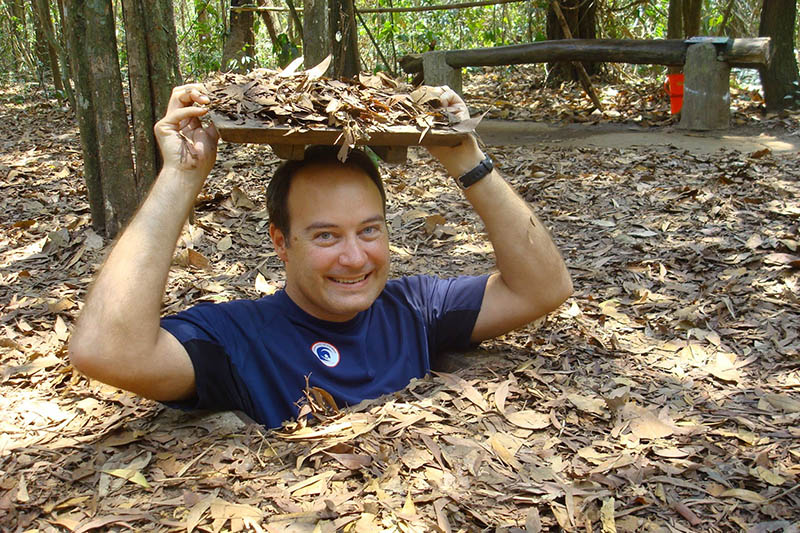
The origins of the Cu Chi Tunnels Vietnam can be traced back to the early 1940s when the Viet Minh, a nationalist movement fighting for Vietnamese independence from French colonial rule, began constructing a network of underground tunnels in the Cu Chi district, located northwest of Saigon (present-day Ho Chi Minh City). The initial purpose of these tunnels was to serve as hiding places and storage facilities for weapons and supplies. However, with the escalation of the Vietnam War in the 1960s, the significance of the tunnels grew as they became an integral part of the Viet Cong’s strategy to fight against the United States and South Vietnamese forces.
Construction and Design of the Cu Chi Tunnels
The Cu Chi Tunnels Vietnam network was constructed primarily by hand, using simple tools and sheer human labor. The tunnels were typically dug narrow and low, often only allowing for crawling, with a height of about 1-1.5 meters and a width of about 0.8-1 meter. The soil excavated from the tunnels was used to build bunkers and fortifications above ground, making it difficult for enemy forces to detect the presence of the tunnels.
The tunnels were designed in a complex and intricate manner, with multiple levels and interconnected passages. This allowed the Viet Cong to move quickly and covertly between different areas, making it challenging for their adversaries to track their movements. The tunnels also had various trap doors, booby traps, and other defensive mechanisms to protect against enemy attacks.
Life Inside the Cu Chi Tunnels

Life inside the Cu Chi Tunnels Vietnam was harsh and challenging, with cramped living conditions, poor ventilation, and constant fear of enemy attacks. The tunnels were divided into different sections, including living quarters, storage areas, hospitals, and command centers. The living quarters were small and could accommodate only a few people at a time. The lack of natural light and fresh air made it difficult for the inhabitants to maintain good health, leading to various health issues such as respiratory problems and skin diseases.
Despite the difficult living conditions, the Viet Cong soldiers adapted to life in the tunnels and developed various survival techniques. They used bamboo shoots to create makeshift air vents, and they also had a system of underground wells to provide a source of water. The soldiers also had to be constantly on guard for potential enemy attacks, which often came in the form of gas or chemical warfare.
Daily Life and Activities in the Cu Chi Tunnels
The Viet Cong soldiers stationed in the Cu Chi Tunnels had a strict daily routine that involved various activities such as cooking, cleaning, and maintaining the tunnels. They also had to be prepared for sudden attacks and were always on standby to defend their territory. The soldiers also conducted training exercises and drills to improve their combat skills and prepare for future battles.
Apart from military activities, the Viet Cong also engaged in farming and gardening within the tunnels. They grew vegetables and raised livestock to supplement their meager food supplies. The tunnels also had a system of communication, with messages being passed through different sections using a series of coded knocks and signals.
Strategic Importance of the Cu Chi Tunnels in the Vietnam War
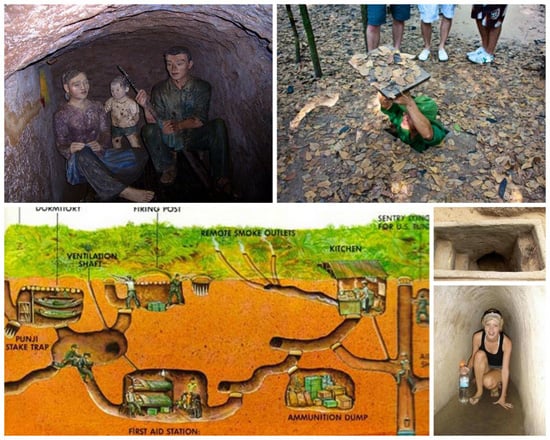
The Cu Chi Tunnels Vietnam played a crucial role in the Vietnam War, serving as a base of operations for the Viet Cong and presenting a formidable challenge to American and South Vietnamese forces. The tunnels provided the Viet Cong with a safe haven from enemy attacks, allowing them to regroup, rest, and plan their next move. They also served as a strategic location for launching surprise attacks on enemy forces, disrupting their supply lines and communication networks.
Moreover, the tunnels were used to store weapons, ammunition, and other supplies, making it difficult for the enemy to cut off the Viet Cong’s access to these essential resources. The tunnels also served as a means of transportation, allowing the Viet Cong to move troops and supplies quickly and covertly between different areas.
Comparison with Other Tunnel Systems in History
The Cu Chi Tunnels were not the first underground tunnel network to be used in warfare. Throughout history, various civilizations have utilized tunnels and underground passages for military purposes. Some notable examples include the ancient city of Derinkuyu in Turkey, which had an extensive network of tunnels used for shelter and protection during times of war, and the Hoosac Tunnel in Massachusetts, USA, which was used by Union soldiers during the American Civil War.
However, the Cu Chi Tunnels stand out due to their sheer size and complexity, covering an area of over 250 kilometers and consisting of multiple levels and interconnected passages. The tunnels were also unique in their design and construction, utilizing simple tools and human labor rather than modern machinery. This allowed the Viet Cong to keep the tunnels a secret and maintain their strategic advantage over their adversaries.
Tunnel Warfare Tactics Used by the Viet Cong in the Cu Chi Tunnels
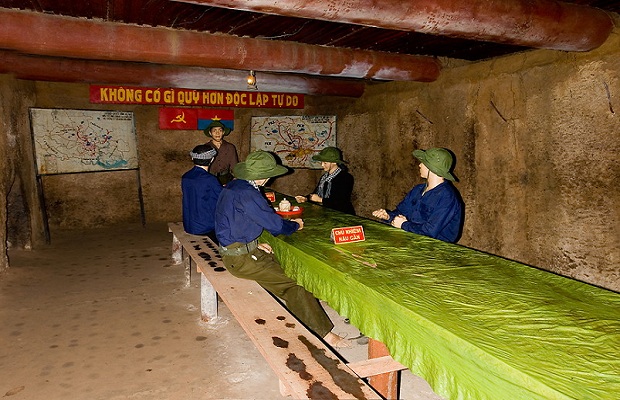
The Viet Cong employed various tactics and strategies to make the most out of the Cu Chi Tunnels Vietnam in their fight against American and South Vietnamese forces. Some of these tactics included:
- Booby Traps: The tunnels were filled with booby traps, which were designed to inflict maximum damage on enemy soldiers. These traps ranged from simple tripwires to more sophisticated devices such as punji sticks, which were sharpened bamboo stakes hidden in the ground.
- Tunnel Ambushes: The Viet Cong would often set up ambushes inside the tunnels, waiting for enemy soldiers to pass by before launching a surprise attack. This tactic was particularly effective in narrow sections of the tunnels where it was difficult for the enemy to defend themselves.
- Tunnel Rats: The American and South Vietnamese forces had a special unit known as the “tunnel rats,” whose job was to enter the tunnels and flush out the Viet Cong soldiers. This was a dangerous task, as the tunnel rats had to navigate through narrow and dark passages while being on the lookout for booby traps and enemy soldiers.
Impact of the Cu Chi Tunnels on the Outcome of the Vietnam War
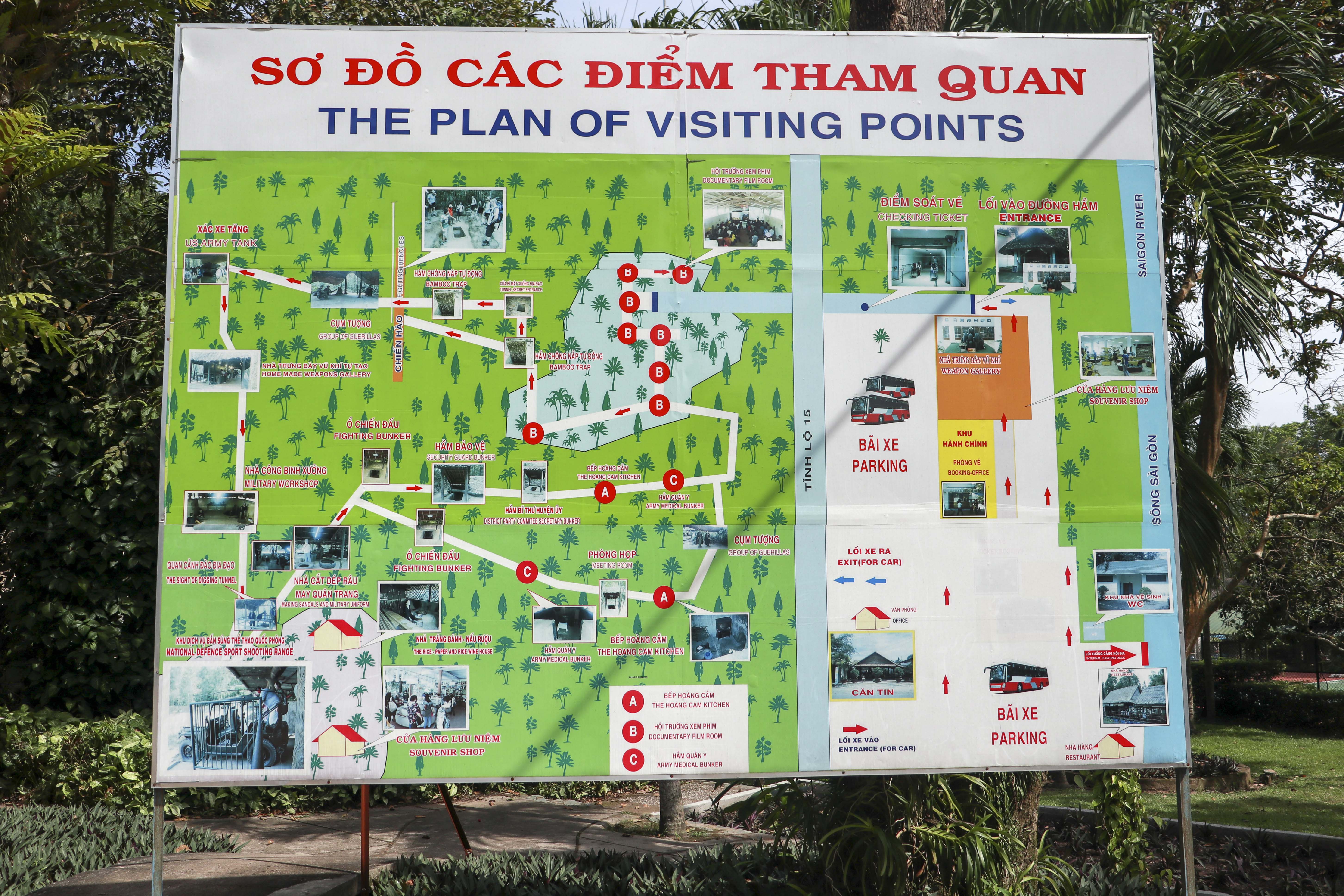
The Cu Chi Tunnels Vietnam played a significant role in the outcome of the Vietnam War. The tunnels allowed the Viet Cong to wage a long and protracted guerrilla war against the United States and South Vietnamese forces, causing significant casualties and draining their resources. The tunnels also served as a symbol of resilience and determination for the Vietnamese people, who were fighting for their independence and freedom from foreign intervention.
Moreover, the Cu Chi Tunnels highlighted the limitations of modern warfare and the effectiveness of guerrilla tactics in countering superior military power. The tunnels also forced the American and South Vietnamese forces to adapt their strategies and tactics, leading to the development of new techniques and weapons specifically designed to combat the Viet Cong’s underground network.
Tourism at the Cu Chi Tunnels Today
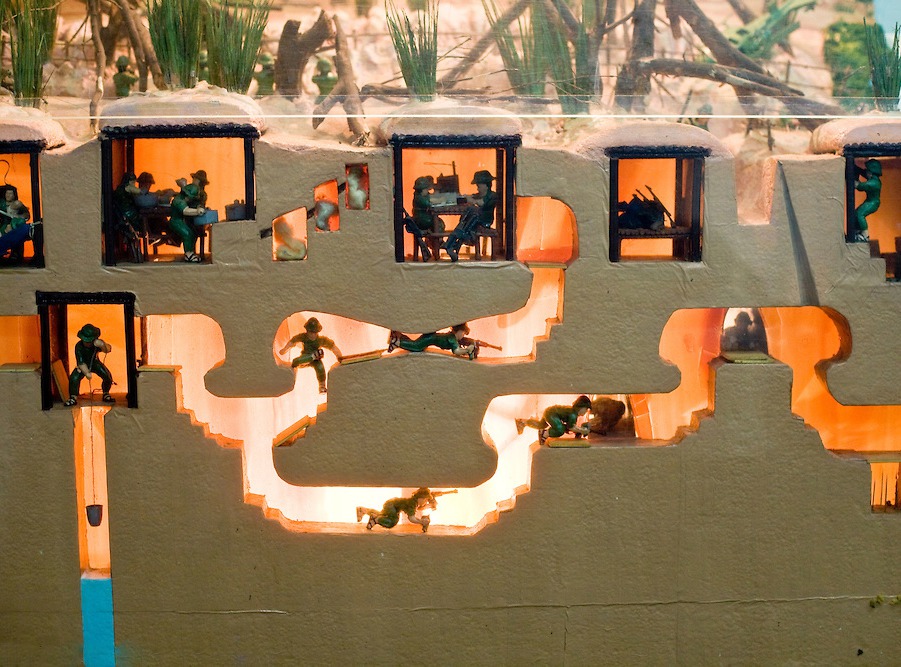
Today, the Cu Chi Tunnels Vietnam have become a popular tourist destination, attracting thousands of visitors each year. The tunnels have been preserved and turned into a museum, providing visitors with a glimpse into the life of the Viet Cong soldiers during the Vietnam War. Tourists can explore a section of the tunnels, view various traps and weapons used by the Viet Cong, and learn about the history and significance of the tunnels.
The tourism industry has also brought economic benefits to the local community, providing employment opportunities and boosting the economy. However, there are concerns that the commercialization of the tunnels may undermine their historical and cultural value.
Preservation Efforts for the Cu Chi Tunnels
Efforts have been made to preserve the Cu Chi Tunnels and protect them from damage caused by natural elements and human activities. The tunnels have been reinforced with concrete and metal supports to prevent collapse, and measures have been taken to control humidity and moisture levels inside the tunnels. However, these preservation efforts face challenges due to the high number of visitors and the impact of urban development in the surrounding areas.
Controversies Surrounding the Cu Chi Tunnels

Despite its historical and cultural significance, the Cu Chi Tunnels Vietnam have also been a subject of controversy. Some critics argue that the tunnels glorify the Viet Cong and their tactics, while downplaying the atrocities committed by both sides during the Vietnam War. There are also concerns that the tunnels may perpetuate a biased and one-sided narrative of the conflict, ignoring the perspectives of other parties involved.
Moreover, there have been debates about the accuracy of the information presented at the Cu Chi Tunnels Museum, with some claiming that it contains propaganda and misinformation. These controversies highlight the need for a balanced and objective approach when presenting the history of the Cu Chi Tunnels and the Vietnam War.
Lessons Learned from the Cu Chi Tunnels for Modern Warfare

The Cu Chi Tunnels Vietnam have left a lasting impact on modern warfare, providing valuable lessons for military strategists and policymakers. Some of the key takeaways include:
- The effectiveness of guerrilla tactics in countering superior military power.
- The importance of adapting to the terrain and utilizing unconventional methods in warfare.
- The limitations of modern technology and the need for a human-centric approach in combat situations.
- The significance of understanding the cultural and historical context of a conflict to develop effective strategies.
Conclusion
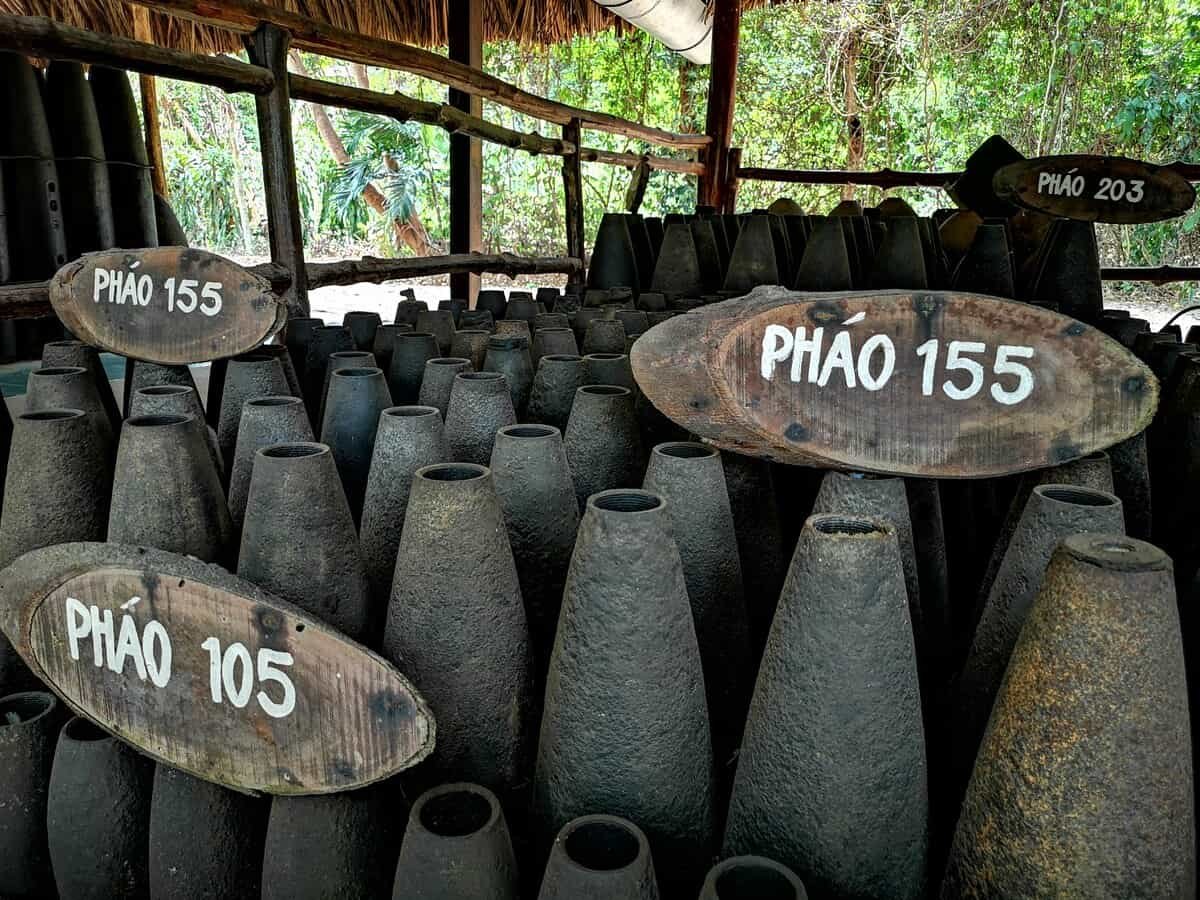
In conclusion, the Cu Chi Tunnels Vietnam played a crucial role in the Vietnam War, serving as a sanctuary and strategic base for the Viet Cong and presenting a formidable challenge to their adversaries. These tunnels not only highlight the resilience and determination of the Vietnamese people but also provide valuable insights into the nature of modern warfare. As we continue to learn from the lessons of the past, it is essential to remember the sacrifices made by those who lived and fought in the Cu Chi Tunnels, and to strive towards a future where conflicts can be resolved through peaceful means.